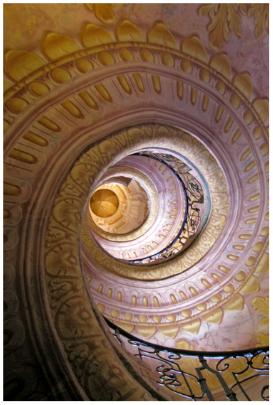My research is driven by the fundamental question of how we perceive the world. I am interested in all aspects of visual perception from very basic processing of lines and dots to object perception and to visual illusions and mental imagery. After studying adult visual processing in depth I followed a new line of research at MIT leading into the field of developmental cognitive neuroscience: Since then I am investigating the development of vision and other cognitive functions in school-aged kids. A second line of research is devoted to understanding autism. I am exploring the cognitive phenotype of people with autism to assist a better characterization of this disorder. Here, I am focusing on vision and attention in children and adults with autism to understand how they see and perceive the world. |
 |
Lines and dots How our brain processes oriented lines and moving dots is at the core of basic visual functioning. I investigated the perception of oriented lines in primary visual cortex and the perception of motion direction in the human motion complex in two studies that are currently being prepared for publication. Faces, bodies and other objects The focus of my current research is on object recognition, more precisely on the perception of faces, bodies and common objects, such as cars and toys. Past research has shown that these visual stimulus categories are processed in astonishingly specialized brain regions. Part of my research at MIT is devoted to understanding how these specialized brain regions emerge and change during development. Face perception in Autism
Autism is a neurodevelopmental disorder characterized by impairments in
social interaction. Persons with Autism seem to have particular
difficulties recognizing and discriminating faces, but what the exact nature of
this face-processing deficit is and how it comes about are not known. Part of my research at MIT is aimed at answering these questions by characterizing in detail the cognitive and
neuronal underpinnings of face perception in children and adults with Autism. Visual illusions and Gestalt phenomena I am fascinated by visual illusions and Gestalt phenomena and convinced that we are able to better understand the constructive nature of vision by studying how we see visual illusions and which brain regions participate in processing these stimuli. At the University of Muenster I am studying how school-aged children perceive visual illusions of motion as markers for inter- and intrahemispheric integration. Visual mental imagery Mental imagery is quasi-perceptual experience; it resembles perceptual experience, but occurs in the absence of the appropriate external stimuli.In collaboration with Amanda Kaas and others, I studied the cortical underpinnings of motion imagery. |